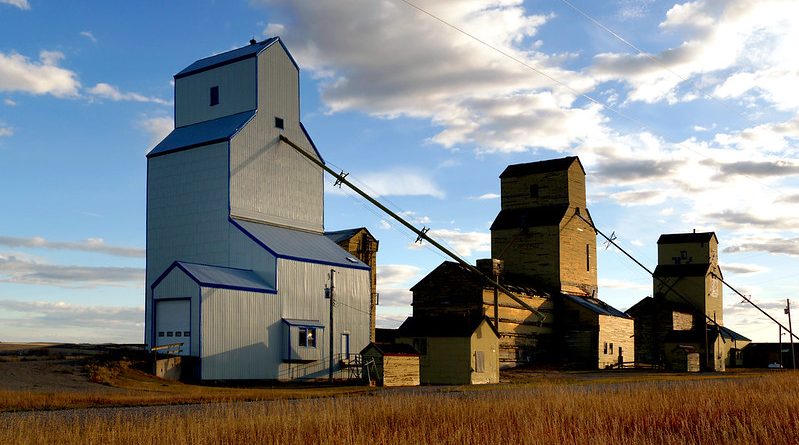The Grain elevators of the Canadian Prairies
Canada is world’s 6th biggest producer of wheat .It came to Canada from the Old World with European settlers who were mainly responsible for the development of the prairies.
The majority of wheat is produced for the export market. It’s harvested in August to September & then bought by the Canadian Wheat Board. This organisation represents the farmers, consumers & government in buying, selling, setting quotas & regulating export – of course, its actions & hotly debated.
Farmers are paid when they deliver the bushels to the grain elevators, where the entire crop is pooled & then sold by the board. The wheat is carried by train to ports to deliver overseas – however, trucks are increasingly taking over the job done by trains to cut costs.
Grain elevators are a classic symbol of mid-western Canada. They are dubbed ‘castles of the New World’. Across the province they have represented the economic life of a town & have become an icon of prairies life. The first elevators were built in 1880s. They peaked in 1938 at 5800 but have dropped to under 2000 now, as Canada lost its position as ‘breadbasket of the world’.
The Canadian Pacific Railway from Saskatchewan to Alberta is a 19,000 mile system that includes 80 tunnels and 3,000 bridges. Before it was built (work started 1884) half a continent, largely unexplored, waited beyond Winnipeg . The train brought the stampede to Calgary, carried the climbers to the Selkirks, founded industrial trade on Lake Superior, made fortunes in Vancouver and brought the checkerboard to the prairies. It’s possible to ride the train (each 1 mile long) through the wheat fields of Saskatchewan




